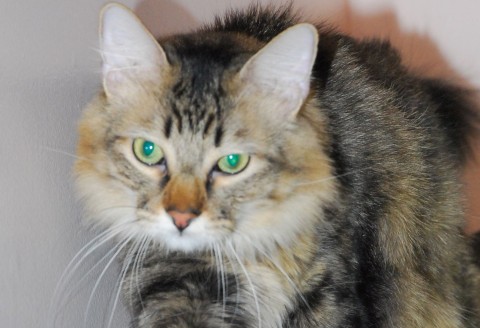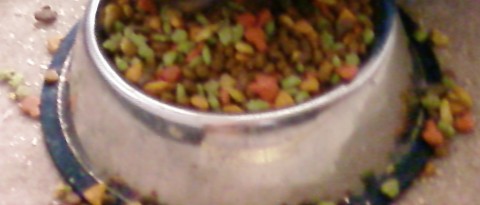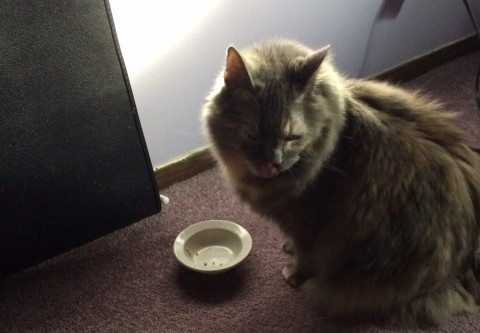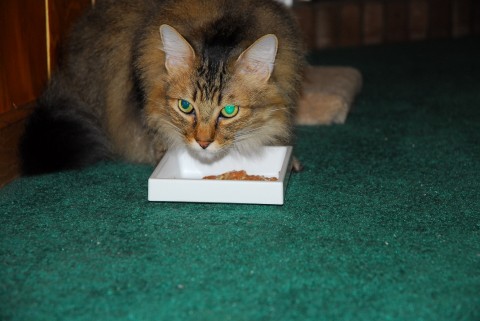We all try to feed our cats the best possible diets, but with so many different foods out there, how do we know what is actually the best? There are all sorts of information out there about what’s best for their internal health, their dental health, their energy levels, even their cognitive function. However, the first thing to consider is whether it’s best to feed cats dry or wet food.
The arguments for dry food
For a very long time, vets recommended their clients feed dry food for dental health. However, lately, vets, especially younger vets, have started recommending their clients feed wet food to their cats. Why is that? According to Petplace, vets are not 100 percent sure whether it’s best to feed your cat dry or wet food. However, Dr. Particia Kuhly says that recent studies actually indicate that wet food is better.
The consistent argument for dry food seems to be dental, but Petplace says that veterinary dentists aren’t thrilled about using dry food for teeth-cleaning purposes. They believe that relying solely on crunchy foods to keep teeth clean is akin to relying on an apple a day to keep your own dentist away.
Another consideration in whether to feed cats dry or wet food is storage. Dry food is easier to store, and often lasts longer. Wet food, by contrast, has to be refrigerated after it’s opened, which can get a little difficult if you’re not feeding a full can at each meal. You can also leave dry food out, so your cat can eat whenever he’s hungry, and you have one less thing to think about in the morning, or in the evening after a long day.
Whether to feed cats dry or wet food depends on a lot
Dry foods also contribute to urinary tract problems, and diets out there to treat urinary problems are basically the pet food industry trying to address a problem they themselves created.
On the other hand, wet foods seem to aid urinary health, along with helping to manage kidney disease and the formation of stones and crystals. It also seems to help with the development of idiopathic cystitis, which is an inflammation of the bladder that causes bloody urine and frequent trips to the litter box. Studies are increasingly pointing to wet food as the right choice when deciding whether to feed cats dry or wet food.
Health should be a consideration in deciding whether to feed cats dry or wet food
PetMD says that, as long as either food is nutritionally balanced, then whether to feed cats dry or wet food comes down to taste and lifestyle. However, Dr. Karen Becker cites a specific study that linked dry food to feline lower urinary tract disease. Most of the cats in the study, who developed urethral obstructions, were fed a diet of only dry food.
Another study that Dr. Becker cites fed cats that suffered from feline idiopathic cystitis a diet of wet food, and others a diet of dry food. Only 11 percent of the cats on the wet food diet had a recurrence, while 39 percent of the cats on the dry food diet had a recurrence.
There are other studies, but it’s looking more and more like the debate over whether to feed cats dry or wet food is shifting towards wet food. Raw food would be better, and we feed our cats a homemade, raw food diet, but many people have neither the time, nor the storage space, for that. If you feed your cat dry food, consider also feeding wet food at least once a day, to help her get the moisture she needs that she’s not getting from her water.






I have fed my cats dry food to which they throw up. Now I feed the canned food. They no longer vomit.
I tried the dry food for sensitive tummies, it seemed to not work.
One of our cats, Aria, always threw up dry food. She’d throw up four or five times a week. With the diet we have all our cats on now, which has no dry food at all, Aria still throws up more than everyone else, but it’s only a couple times a month. It’s not surprising to me that switching from dry to wet for your kitties helped with the vomiting, and I’m REALLY glad it did!